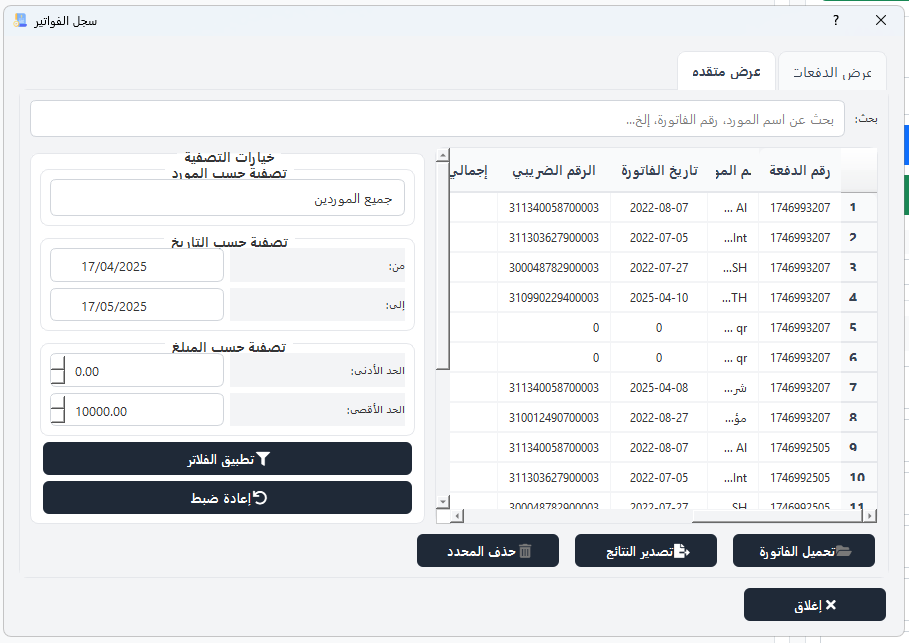Data Export & Reporting
Learn how to export invoice data and generate reports with Invoices Reader
Introduction to Data Export
Invoices Reader offers robust export and reporting capabilities that allow you to:
- Export processed invoice data to various formats
- Generate standardized and custom reports
- Share invoice data with accounting systems
- Create summaries for analysis and record-keeping
Data export is a critical feature for integrating Invoices Reader with your accounting workflow. Whether you need to import data into your accounting software or create reports for management, the export features provide flexible options to meet your needs.

Available Export Formats
Excel
Microsoft Excel format (.xlsx)
- Formatted spreadsheets
- Multiple worksheets
- Formulas and calculations
CSV
Comma-Separated Values (.csv)
- Universal compatibility
- Simple text format
- Easy import to any system
Portable Document Format (.pdf)
- Professional reports
- Consistent formatting
- Print-ready documents
Choosing the Right Format
- Excel: Best for data analysis, creating pivot tables, or when you need to perform calculations
- CSV: Best for importing into accounting systems or databases
- PDF: Best for sharing reports with others or for printing
Excel Export
Exporting to Excel provides the most flexible format for data analysis:
-
Access the Export Feature
From the database view, select the invoices you want to export, then click the Export button.
-
Select Excel Format
Choose Microsoft Excel (.xlsx) as the export format.
-
Configure Export Options
Excel Export Options
-
Select Fields to Export
Choose which invoice fields to include in the export.
-
Export the Data
Click Export and choose where to save the Excel file.
Excel Export Features
The Excel export includes several advanced features:
- Multiple worksheets (summary and details)
- Automatic totals and subtotals
- Conditional formatting for highlighting important data
- Filterable Excel tables for easy data analysis
CSV Export
CSV export is ideal for importing invoice data into other systems:
-
Access the Export Feature
From the database view, select the invoices you want to export, then click the Export button.
-
Select CSV Format
Choose CSV (.csv) as the export format.
-
Configure CSV Options
CSV Export Options
-
Select Fields to Export
Choose which invoice fields to include in the export.
-
Export the Data
Click Export and choose where to save the CSV file.
CSV Export Tips
- Check with your accounting system for the required CSV format (delimiter, encoding, etc.)
- For international characters, always use UTF-8 encoding
- Some systems require specific field names - you can rename fields during export
PDF Reports
PDF reports provide professionally formatted documents for sharing and printing:
-
Access the Reports Feature
From the database view, click the Reports button.
-
Select Report Type
Invoice Summary
Summary of all selected invoices
Vendor Analysis
Spending breakdown by vendor
Tax Report
VAT and tax summary
Monthly Summary
Invoices grouped by month
-
Configure Report Options
Set date ranges, grouping options, and other parameters specific to the report type.
-
Customize Appearance
Add your company logo, customize headers/footers, and select a color scheme.
-
Generate and Save
Click Generate Report to create the PDF, then save it to your desired location.
PDF Report Features
- Professional formatting with your company branding
- Charts and graphs for visual data representation
- Table of contents for longer reports
- Automatic pagination and headers/footers
Creating Custom Reports
For specialized reporting needs, you can create custom report templates:
-
Access Report Designer
From the Reports menu, select Custom Report Designer.
-
Start with a Template
Choose a base template or start from scratch.
-
Design Report Layout
Use the drag-and-drop interface to add fields, tables, charts, and formatting elements.
-
Define Data Sources
Specify which database fields to include and how to filter/group the data.
-
Save Template
Save your custom report template for future use.
-
Generate Report
Run the report with your current data selection.
Custom Report Ideas
- Quarterly tax summary for accountants
- Vendor spending analysis with trend charts
- Department-specific expense reports
- Year-over-year comparison reports
Tips & Best Practices
Filter Before Exporting
Always apply appropriate filters before exporting to ensure you're only including relevant data.
Save Export Templates
For recurring exports, save your export settings as templates to ensure consistency and save time.
Schedule Regular Reports
Set up scheduled exports for regular reporting needs, such as monthly summaries or tax reports.
Verify Exported Data
Always check a sample of exported data against the original invoices to ensure accuracy, especially for financial reporting.
Next Steps
Now that you understand data export and reporting, you might want to explore: